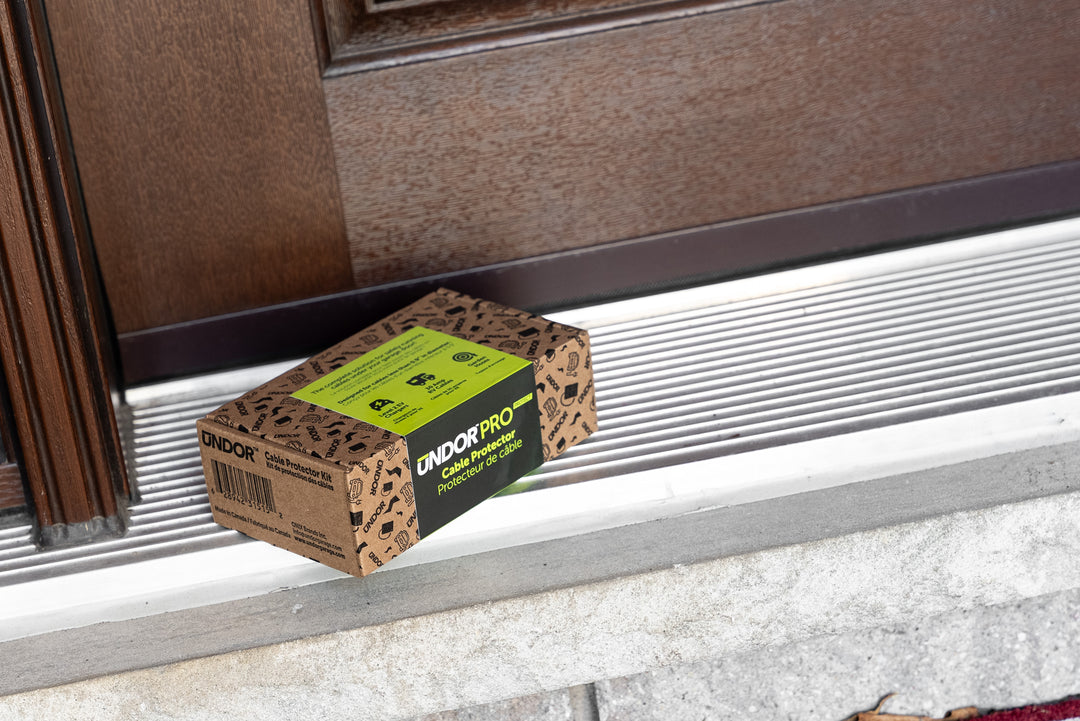Guide to Charging EV at Home Efficiently
Should I charge my EV to 100% every time I’m at home?
It's a common question. Like many electric vehicle (EV) owners, you might wonder whether topping up your EV to a full charge is beneficial or detrimental. While it seems logical to always have a full battery, consistently charging to 100% can impact the longevity of your battery. So, what’s the best approach to charging your EV at home?
Understanding EV Battery Health
Caring for your EV’s battery health is crucial. Understanding its nuances, you can make informed decisions and extend its lifespan significantly.
Battery health directly affects the range and performance of your vehicle.
Typically, modern EV batteries are designed with longevity in mind, incorporating advanced technology and software.
Charging habits play a key role in maintaining optimal battery health.
Avoiding extremes, such as consistently charging to 100% or allowing the charge to drop too low, is essential to prolong battery life.
Ultimately, a balanced charging routine ensures your EV remains reliable and efficient, contributing to a worry-free driving experience.
The Impact of Charging to 100%
Frequent full charges may degrade your battery.
When you charge your EV to 100% routinely, you stress the battery. This stress manifests in higher degradation rates, which can shorten its overall lifespan, leading to potential performance issues down the road. Therefore, it's advisable to aim for a charging level that keeps the battery health in its optimal range.
Echoing the importance of balance.
Experts recommend maintaining your charge between 20% and 80%.
This practice not only preserves battery health but also aligns with energy-efficient principles. Prolonging your battery life doesn’t just save you money - it also aligns with sustainable practices in the long run.
By adjusting your charging habits and avoiding unnecessary full charges, you ensure your EV stays in top condition, providing a dependable and eco-friendly driving experience. This conscious approach to charging your EV at home exemplifies responsible vehicle ownership and environmental stewardship.
Manufacturer Recommendations for EV Charging
When it comes to charging your EV, manufacturer guidelines play a crucial role. Major automakers prioritize battery longevity and performance, providing detailed recommendations tailored for peak efficiency.
Most recommendations include avoiding frequent full charges. Keeping battery levels between 20% and 80% is often suggested.
Additionally, manufacturers emphasize using Level 1 or Level 2 chargers. Fast charging (typically known as Level 3) might degrade your battery faster over time.
Following these practices can significantly boost your EV's battery health. These guidelines are designed to help you get the most out of your electric vehicle.
Thus, adhering to manufacturer recommendations isn't just a good practice, it’s essential. Charging your EV at home in alignment with these tips ensures you preserve your vehicle's performance and lifespan.
Benefits of Not Charging Fully
Avoiding a full charge enhances your EV battery's lifespan.
Research shows that consistently charging to a maximum level accelerates battery degradation, leading to reduced capacity over time. By maintaining your charge between 20% and 80%, you optimize battery health and promote better long-term performance.
Not charging fully can also save you time. Often, the final 20% of charging takes longer compared to the initial 80%, so avoiding that extra time can be a convenience.
Finally, charging partially minimizes energy waste and can lower your electricity bill. Being mindful of your charging habits enables you to maintain a sustainable routine, contributing significantly to your EV's efficient operation.
Charging Habits for Daily Commuters
For daily commuters, managing your charging habits is crucial to maximizing your vehicle's efficiency and lifespan.
Firstly, it's best to maintain a charging routine that aligns with a shorter daily commute. Typically, charging your EV to about 80% is adequate, allowing you to benefit from enhanced battery longevity without compromising your travel needs. This practice ensures better overall performance and efficiency.
Additionally, try to charge your vehicle during off-peak hours. Off-peak rates are usually lower, which can significantly reduce your electricity bill and support the grid by avoiding high-demand periods. This habit not only saves you money but also promotes a more sustainable energy system.
Lastly, invest in a smart home charger to streamline the process. These chargers allow you to schedule charging sessions and monitor energy usage. The convenience of having an automated system can further optimize your charging habits, ensuring your EV is always ready while maintaining optimal battery health.
Long-term Battery Longevity
For the long-term health of your EV’s battery, you need to consider more than just daily charging.
Regularly charging to 100% can strain the battery, reducing its lifespan over time. By maintaining an optimal charge level, typically around 80%, you ensure your battery remains healthy and efficient. This practice helps in delaying inevitable battery degradation and maintains a reliable performance for longer durations.
Furthermore, this approach minimizes the stress on the battery, promoting stability and efficiency. By avoiding frequent, full charge cycles, you support a more sustainable battery usage pattern that extends the overall lifespan of your battery system.
Therefore, prioritize smart charging habits to maximize your EV’s long-term potential. By balancing between necessary daily usage and battery longevity, you not only enjoy optimal performance but also significantly enhance the life expectancy of your electric vehicle, ensuring it serves you effectively and reliably for years to come.
Charging Efficiency at Home
Optimizing charging efficiency at home can significantly influence the longevity and effectiveness of your EV battery.
From 2016, research elucidated a tangible connection between charging habits and battery longevity. Charging to 80% daily, opposed to the full 100%, has shown to conserve battery health substantially.
Moreover, it's not just about the percentage you're charging to; the time of day also matters. Charging during off-peak hours, like around 3 AM, can further enhance efficiency and reduce overall costs.
Enhancing the efficiency of this process ensures you're not only preserving battery health but also reducing unnecessary expenditures and making an environmentally conscious choice.
Harness the power of efficient home charging and witness a seamless, cost-effective driving experience.
Charging EV at Home: What You Need to Know
Basic knowledge of home charging is essential for any EV owner.
Since 2016, studies have demonstrated the critical impact of charging habits on battery life and performance.
So, it’s crucial to understand how efficient home charging can protect your investment and extend your vehicle’s lifespan.
Ensuring you have the right equipment and mindset, such as charging during off-peak hours, is vital. Opt for a Level 2 charger, which provides a faster and more effective charging solution, greatly enhancing your everyday experience.
In conclusion, intelligent home charging habits will save you money, preserve your EV’s battery, and contribute to a greener planet.
The Role of Battery Management Systems
Modern electric vehicles (EVs) are equipped with advanced battery management systems that work tirelessly to optimize charging and discharging cycles.
These systems ensure your battery does not overcharge.
By preventing overcharging, battery management systems play a key role in extending battery life and maintaining optimal performance. They also ensure that your EV operates efficiently, maximizing the health and longevity of the battery.
In addition to optimizing charging, these systems provide crucial data on the battery’s condition, which is invaluable to you as an EV owner. Accurate information on battery health allows you to adjust your driving and charging habits accordingly, ensuring you get the most out of your investment.
Cost Implications of Charging Practices
Charging EVs at home has significant cost benefits.
Charging overnight when electricity rates are lower can reduce your expenditure. You also have the added convenience of avoiding public charging stations, which often cost more. Additionally, many utilities offer special EV rates that further reduce your costs. Therefore, charging at home represents an efficient use of resources.
Peak hours can lead to costly bills.
However, consider the rate structure - if you charge during peak hours, the cost can rise significantly. By identifying off-peak times and utilizing them, you can maximize savings.
Remember that careful management of your charging schedule and adherence to utility rate plans can result in notable reductions in electricity costs, empowering you to make the most economical choices for your EV charging needs.
Charging Speeds and Their Effects
Charging your EV at home efficiently involves understanding different charging speeds and their implications, ensuring an optimal balance between cost, battery health, and convenience.
Three primary charging levels exist.
Firstly, Level 1 chargers use a standard 120-volt outlet and provide a slower charge. This level is best suited for overnight charging.
Secondly, Level 2 chargers require a 240-volt outlet and offer a faster charging speed, reducing the overall charging time significantly.
Lastly, DC Fast Chargers provide the quickest solution, but they can potentially impact long-term battery health if used excessively. However, these are not typically used for home charging.
Faster charging speeds, like those found with Level 2 chargers, are ideal for daily use, providing a practical balance. Yet, using Level 1 chargers can be sufficient, cheaper, and gentler on your battery, prolonging its lifespan.
Optimal Charging Levels
Charging your EV to around 80% rather than 100% can significantly enhance the battery's longevity and overall efficiency, ensuring you're always ready for the road. Strive to maintain a balanced level for daily use.
This strategy helps reduce battery degradation and maximizes long-term performance, making your EV a more reliable and sustainable choice for years to come.
Recommendations for 80% Charging
Charging your EV to 80% rather than 100% is a smart choice for maximizing battery life and performance. This practice reduces overall wear and tear on your battery.
Maintaining 80% charge strikes a balance between having sufficient daily range and promoting long-term battery health. Ready to make a change? Start today and see immediate benefits.
Charging to 80% can extend your EV battery’s lifespan significantly, ensuring it remains efficient in the long run.
For regular daily commutes, sticking to 80% ensures you have enough power without stressing the battery. While occasional full charges for long trips are okay, adopting this habit will keep your EV running smoothly and efficiently. Embrace this approach and drive confidently, knowing you're making the best choice for your EV.
Situations When 100% Charging is Necessary
Charging your EV to 100% isn't always needed, but certain situations warrant it.
- Long Road Trips: Ensuring maximum range for highway travel with fewer stops.
- Remote Destinations: Limited charging infrastructure or scarce charging stations.
- Cold Weather: Higher energy consumption for heating systems in the vehicle.
- High-Capacity Demands: Hauling heavy loads that may deplete battery faster.
Each of these scenarios requires you to maximize your vehicle's range and efficiency.
Understanding when to charge your EV fully empowers you to make the best choices.
Prepare for these unique conditions by charging to 100% when necessary and enjoy your journey stress-free.
Comparing Home Charging to Public Stations
Charging your EV at home offers unparalleled convenience, allowing you to plug in overnight or whenever it's most suitable for your schedule.
Since 2016, electric vehicle infrastructure across Canada has improved significantly, making public charging stations more accessible than ever. However, despite this growth, home charging remains the most reliable and consistent option for many EV owners, eliminating the need to plan trips around available charging locations.
At home, you control your charging times, potentially benefiting from lower electricity rates during off-peak hours. This not only saves you money but also helps balance the overall energy grid, making it a win-win for your wallet and the environment.
Public stations, while great for long trips or emergency top-ups, often come with higher costs and the uncertainty of availability. Despite their convenience, they can't match the peace of mind that comes with knowing your vehicle is fully charged each morning without any extra effort.
Ultimately, balancing home charging with strategic use of public stations will optimize your EV experience, ensuring you stay charged and ready for any journey.
Common Myths About EV Charging
Charging your EV at home is shrouded in myths that often mislead new owners.
One popular myth is that frequent charging degrades your battery quickly. In 2016, data from a detailed electric vehicle study showed that battery degradation occurred more due to extreme temperatures than regular charging cycles.
No, it’s not necessary to always charge your EV to 100%. Most manufacturers actually recommend keeping the charge level between 20% and 80% to maintain battery health and longevity.
Another common myth is that public charging is unreliable, which isn’t true. The national infrastructure has expanded, ensuring higher reliability and availability, making it easier to complement your home charging routine.
By debunking these myths, you can make informed decisions and enjoy a more seamless and efficient EV ownership experience.
Making an Informed Decision on Your EV Charging Strategy
When charging your EV at home, your primary concern should be understanding the best practices for battery health.
Frequent full charges to 100% can strain your battery.
Instead, focus on maintaining your charge level between 20% and 80%.
This approach not only maximizes battery longevity but also enhances overall performance.
By adopting this charging strategy, you’ll experience fewer battery-related issues, reducing maintenance costs.
Thus, the right charging habits can significantly improve your EV ownership experience.







